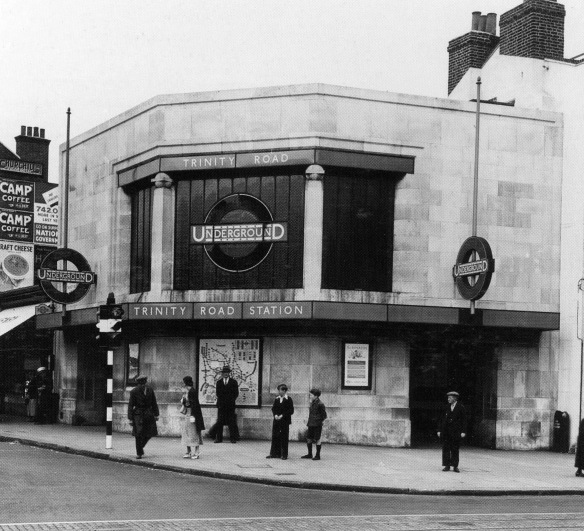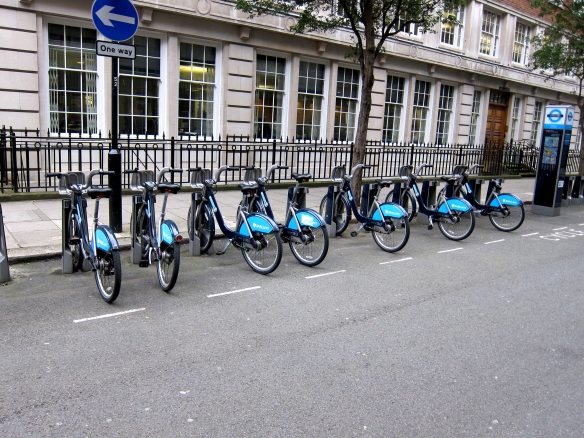TO ENLARGE AN IMAGE, CLICK ON IT. REPEAT IF REQUIRED
I have used the London Underground almost all my life. My earliest memory is of visits to South Kensington where my maternal grandparents lived in the early 1950s.
It was not until Helen and Bill gave me this book for Christmas that I had ever paid attention to the architecture of the stations, despite many thousands of trips through many of the total of 270.
This beautifully presented work, which I finished reading today, would appeal to anyone even vaguely interested in our capital, its history, its buildings, or its communication networks. Lavishly illustrated with contemporary photographs and original drawings., the author tells of what must have been the boom period in the 1920s and ’30s of the laying down of the underground veins of the metropolis. These were the decades of Holden’s architectural influence, before progress was interrupted by World War 2. Although he continued to operate into the 1950s, this was largely in a consultancy capacity.
I suppose, like most of us today, I concentrate on battling my way through the crowds, having ‘no time to stand and stare’ at the truly amazing complete design projects that are these working stations, now far more busy than could have been originally envisaged. Nevertheless, most of these early facilities, albeit many adapted and updated, are still in use today, although some have been renamed. Most have survived well, and are still up to the task.
I could not estimate the number of times I have walked around the splendid underground ring of Piccadilly Circus without understanding that it replicated the overground ring surrounding the statue of Eros.
These drawings for Eastcote demonstrate the thought and skill that was applied to all furniture and fittings.
When we lived in Morden, I used that terminal station of the Northern Line frequently. The sight of the classy shops and sparse populace would amaze anyone currently fighting their way into the station, and being depressed by the current items on offer in the rather less attractive outlets. (Like many illustrations, this one was a double spread).
Anyone who has not read of or does not remember the use to which the Gents at Clapham Common, outside which a gentleman stands with his arms folded, has now been put, may care to follow this link to A Bit Of A Bummer.
In https://derrickjknight.com/2012/10/31/curry-a-biography/ I feature a photograph of Tooting Bec station as it is today. When first built it was called Trinity Road, on the corner of which it stands. From 1980 until moving to Newark in 1987, a pack on my back, I ran past this building every weekday on my way to Edgware Road in North London. The Camp Coffee advertised on the wall to the left in Trinity Road was a treacly mixture to be stirred into a cup of hot water, administered by my maternal grandmother. If it is still available today, I don’t want to know.
As mentioned in https://derrickjknight.com/2014/01/25/all-is-flux-nothing-stays-still/,in the summer of 2013, the public house ‘The Colliers Tup’, opposite Colliers Wood tube station, has undergone a complete facelift and has been renamed ‘The Charles Holden’. I will look upon his legacy with fresh eyes in the future.
Our friends Vicki and Barrie joined us for the evening, which was as hilarious as we expected. In her own fair hand Jackie wrote me out a menu in order to expedite this post. She was too humble to add the necessary superlatives, but I’m sure you could supply some yourselves. Cabernet sauvignon, Hoegaarden, water, and fruit juices were imbibed



















